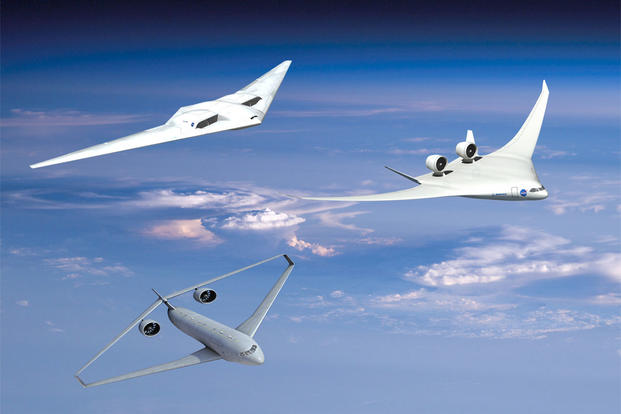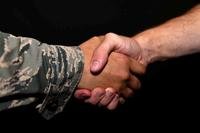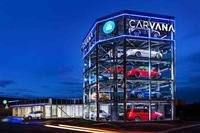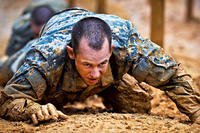(Content from NASA.)
There is great variety in the types of jobs available in the aerospace field. A great way to learn more is to read about specific NASA engineers and scientists and to follow their day-to-day work in their field journals. An aerospace team is made up of: engineers, scientists and technicians working together towards a common goal. The following are some of the major kinds of roles.
Related: Search for Aerospace and Defense jobs.
Engineers
- Analytical: Analytical engineers use their knowledge of engineering concepts to analyze data and make conclusions. For example, based on their understanding of aerodynamics and structures, engineers can figure out what makes an airplane fly the way it does and how to make it safer and stronger. Engineers often specialize in a particular field (like thermodynamics, aerodynamics or structures).
- Design: Design engineers determine the size, shape, structure, arrangement, and function of components of airplanes that meet the specifications set by the customer and safety or cost constraints. They also need to keep in mind how the aerodynamics, power requirements and weight will affect the overall design.
- Materials and Processes: A big focus in the design of airplanes is to make them weigh as little as possible. Materials engineers study materials, both conventional and composite for use in airplane structures. Some areas of concern are the strength and rigidity of the material, its availibility, its ease of processing, and its resistance to temperature and fatigue.
- Systems: Because an airplane's design is really the combination of a bunch of smaller sub-systems, a systems engineer tries to look at the big picture. They use their overall knowledge of engineering to determine whether all the systems interface with each other correctly. Often they need to check back with the customer to make sure the design being developed is on the right track and meeting their specifications.
- Software: Because almost all systems on an airplane are controlled by computers, software engineers design and test the software that control and instruct those computers. Software engineers also develop the computer simluation and data collecting software used in the airplane design.
- Manufacturing: Working closely with design engineers, manufacturing engineers make sure that an airplane design can be manufactured quickly and easily. They plan the tooling, construction, and assembly of airplane components and determine whether they still meet necessary requirements throughout the process.
- Flight Research: Flight research engineers analyze data that comes back from research flights to figure out how well a design performed on an actual flight. From these observations, they can suggest what might need to be changed in future similar designs. They also are involved in the research test flight planning and the preparation of final flight research reports.
- Field Service: Once an airplane is manufactured for general use, engineers are needed for what is called field service. They provide maintenance and service information to the airplane's users (usually airliners or the military) to make sure the product is used safely and most efficiently. If there's a problem that needs to be resolved with the airplane's design, field service engineers contact the manufacturing and design engineers.
Related: Search for Engineering jobs.
Scientists and Technicians
Before engineers can try to answer "how" questions like "How can we design an airplane for this specific function?" they need to have an understanding of the science behind it all. Scientists seek answers to "why" questions that provide these clues to the general science concepts that are applied by the engineers.
Scientists usually work in one of three places: Industrial Research and Development (R & D), Private and Government Labs and Academic Research. Scientists are vital to the discovery of new products and processes or to broaden the field of science by deriving or clarifying theories and concepts to be used by others. In an academic setting, many scientists teach at a college or university while they are also doing their research.
Technicians support aerospace engineers and scientists in many roles - from assisting in the collection and analysis of data to building and maintaining important models and equipment.
Almost every task in the aerospace field requires the teamwork of engineers, scientists and technicians.
Related: Search for Aerospace Technician jobs.
What kind of education and experience do I need?
Most jobs in a high-tech field like aerospace require that you have a college degree. Here are some of the classes that are typical to a college program in aerospace. Because classes vary from school to school, this outline is here only to give you an idea of the types of classes and when you would be taking them. As you can see, you get to study a wide range of subject areas in science and engineering. Often, in the later years of your college career, you can focus in a particular area of aerospace and develop that into your specialty. As a professional, you can use this specialty to work together with other people in particular fields.
| FIRST YEAR | English | ||
| Analytic Geometry & Calculus | |||
| Chemistry and Physics | |||
| Computers/Programming | |||
| SECOND YEAR | Humanities and Social Sciences | ||
| Calculus & Differential Equations | |||
| Engineering Mechanics | |||
| Statics & Dynamics | |||
| Thermodynamics | |||
| THIRD YEAR | Aero-Design Program | Aero-Research Program | Common to Both |
| Applied Aerodynamics | Analytical Mechanics | Fluid Mechanics | |
| Elementary Structural Analysis | Electromagnetic Fields | Heat Transfer | |
| Materials and Metallurgy | Advanced Calculus & Analysis | Electrical Circuits | |
| Aeronautical Lab | |||
| FOURTH YEAR | Aero-Design Program | Aero-Research Program | Common to Both |
| Flight Vehicle Design | Engineering Mechanics | Gas Dynamics | |
| Vehicle Stability and Control | Vehicle Systems | Electronics | |
| Structural Analysis | Flight Mechanics | Modern Physics | |
| Trajectory Dynamics | Aerospace Propulsion | ||
| Boundary Layer Theory | |||
| Astronautics | |||
| Advanced Mathematics |
Again, take a look at different catalogs to get an idea of the classes being offered at the colleges you are interested in. As for getting experience in the aerospace field, it gets easier to get internships and valuable work experience once you take some classes in colleges. Check out the college's career services office to find out about summer internships and part-time jobs with high-tech companies. Some colleges allow students to do hands-on research with professors and faculty during the school year. Not only will you learn a lot through these experiences, but you will stand out more with possible employers.
Towards the end of your college career when you start thinking about a full-time job, consult the career services office again to see what job placement services are available to you. Often large companies visit college campuses to interview students for full-time jobs.
Two Extra Tips
Sharpen your communciation and computer skills and stay informed of current events in the world of science, technology, and particularly, aerospace.
In today's world, it is essential to be able to communicate technical ideas clearly and effectively in written and verbal form. And, as careers in science depend more and more on computers, it's also important to be familiar with various computer systems and programs.
Because the aerospace industry is constantly changing, employers like students who keep up with what products (aircraft, systems, software) are made by which companies. Read the newspaper. Periodicals like magazines like Air & Space and Aviation Week are also good places to start. Staying informed on what's new in aerospace might also modify your specific interests in this exciting field.
Related: Does your resume pass the 6-second test? Get a FREE assessment.
The Next Step: Find the Right Veteran Job
Whether you want to polish up your resume, find veteran job fairs in your area, or connect with employers looking to hire veterans, Military.com can help. Sign up for a free Military.com membership to have job postings, guides and advice, and more delivered directly to your inbox.











